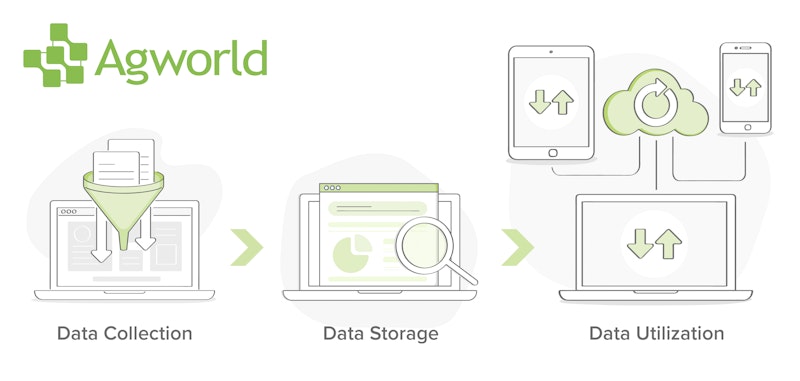With most discussions on social media, television and life in general right now seemingly focused on just a few topics, like covid and the upcoming election, I very much welcomed the opportunity to ‘talk shop’ with some growers, agronomists and ag retailers in both Australia and the USA over the past few weeks. Agriculture is, fortunately, one of the few industries that is still functioning with as much normality as possible, and it’s great to hear everyone discussing next year’s plans already. For our industry, one thing is sure: growers are at the centre of food production, no matter what happens around us.
The common theme in all discussions last week was agricultural data, what everyone's expectations are, how industry stakeholders feel agricultural data should be utilized moving forward, and what the next frontier is for agricultural data to deliver more value to growers and all their business partners.
While the digital transformation of agriculture has been underway for numerous years, many growers, agronomists and ag retailers told me they feel like they’re still stuck in the first phase of the digital transformation: data collection. And, while data collection is an integral part of the process, it’s not until this process is humming and the data storage component (second phase) is in place, that the rewarding third phase can start: data utilization.

The main reason for why the people I spoke to hadn’t moved on in the process yet, is that they feel it’s difficult to find somewhere they’re comfortable with storing their data and where they’re able to utilize this data for their own benefit. Data in this case can be anything like machinery data, IOT device data, agronomic data, financial data, crop management data, etc. So, my natural next question to them was: “what will it take for you to feel comfortable with a provider that offers data storage?” and the answers were surprisingly aligned.
Independent
The main concern, especially for growers, was who owns the platform they store their data on. Even if it’s known that they’re still the owner of their own data and the platform explicitly states that data cannot be used by the platform’s owner or any other 3rd party without the grower’s consent, there appears to be a very strong apprehension among growers.
I think that we’ve already seen this play out in the market to some extent, just take the Tillabe / Climate controversy earlier this year for example - where no data was said to be shared without consent, but the partnership still had to be dissolved due to pressure on social media.

A lot of consolidation has taken place in the Agtech industry over the past few years as well and, as one grower told me: “Why would I bother storing my data on a platform I trust, if they can be broke tomorrow or, worse, suddenly owned by Big Ag, a large bank or any number of other parties I don’t want owning my data.”
Independence of data platforms, it seems, is still one of the most important considerations for most farmers and is likely to stay important for many years to come.
Data Community
A large portion of the growers I spoke to, as well as their agronomists and ag retailers, also told me that they feel they’re not able to get enough upside from their ag data. They’re able to use it, in isolated silos, for part of the on-farm decision making process, but want to extend these benefits further. Some told me they don’t understand why they’re able to capture in-field information digitally, but are then not easily able to share this with their farming partners such as insurers, grain buyers, banks, processors and others.
Search product labels with Agworld DBX
A reliable source of plant protection chemical label data so that you can find the information you need for managing weeds, pests and diseases in a safe and effective way. Download product labels and SDSs
Powered by Greenbook
To be clear: these growers want to be 100% in charge of their data, but they want to be part of a ‘data community’ where they can easily share data with their farming partners when they desire to do so. Or, as one ag retail GM told me: “When farm data already exists in digital form, why is it so hard to let specific parts of this data flow through to a grower’s business partner when they desire to do so? We need more plumbing!”
All-up, the points made in these discussions were interesting, but not surprising. Everyone involved in farming wants to be part of a safe, independent, data community where they can store all their data, where they are firmly in charge of their data, and where they can seamlessly share pieces of their data when they desire to do so, with whomever they like. Simple, right?





